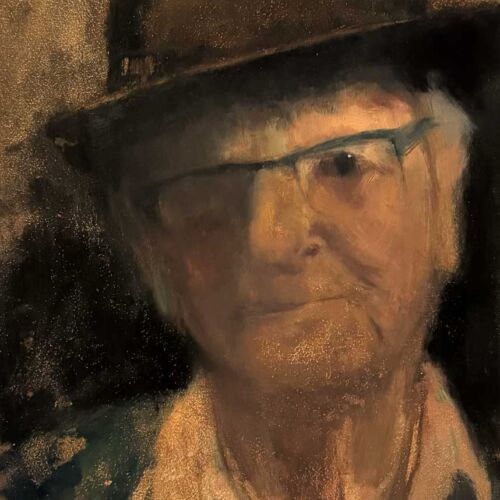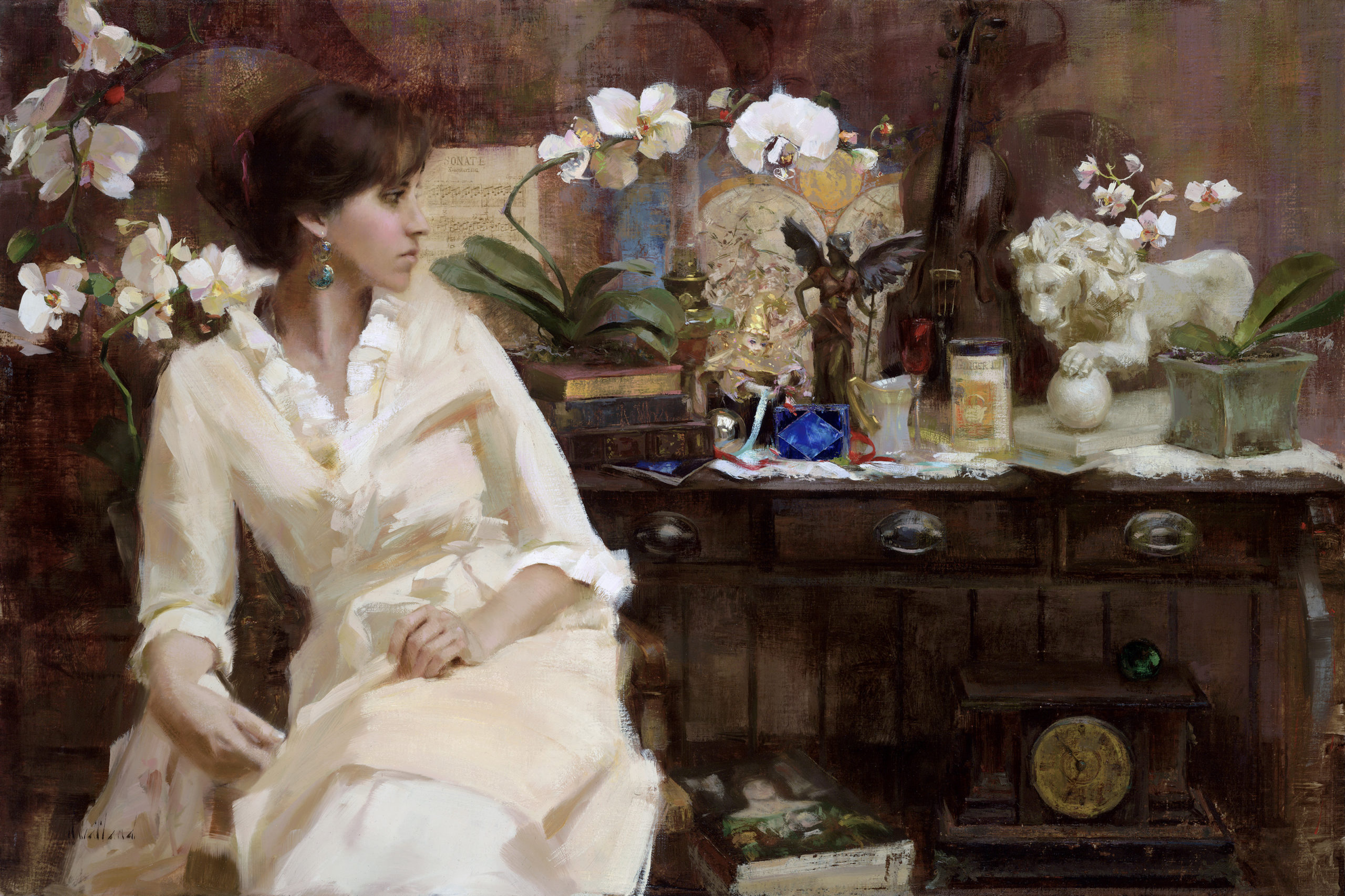Grasping Composition and Color in Figurative Oil Painting
Grasping Composition and Color in Figurative Oil Painting
Blog Article
The Development of Figurative Oil Paint: Comprehending Its Historical Value and Modern Interpretations
The evolution of figurative oil painting functions as a compelling lens via which to analyze the interplay between imaginative expression and historic context. From the precise naturalism of the Renaissance to the stirring power of the Baroque, each age has contributed layers of significance and technique to this classic medium. Contemporary musicians, drawing from this rich heritage, are currently reinterpreting the human number in manner ins which test conventional stories. As we check out these improvements, one must take into consideration just how the discussion in between previous and existing informs not just artistic technique however likewise societal reflections in an increasingly intricate world.
Beginnings of Metaphorical Oil Painting
The origins of metaphorical oil painting can be mapped back to the early Renaissance in Europe, particularly in the 15th century. The advancement of oil paint allowed for better depth of color and detail, improving the realism and vibrancy of their work.

In this transformative age, numbers were typically shown within contextually rich environments, showcasing not just their physical attributes yet also their mental states. Pioneers such as Jan van Eyck and Titian harnessed the tool's convenience, utilizing layering strategies to accomplish luminosity and appearance. This development assisted in the representation of detailed materials and the subtleties of skin tones, contributing to the growth of portraiture and narrative scenes.
Additionally, the Renaissance emphasis on humanism promoted an appreciation for individuality, which in turn affected musicians to produce even more relatable and vibrant figures - figurative oil painting. Because of this, metaphorical oil painting became an effective automobile for narration and emotional engagement, laying the groundwork for future artistic motions and designs
Key Historic Activities
Significant historic movements have shaped the development of figurative oil paint, each adding distinct philosophies and techniques that increased the medium's possibilities. The Renaissance noted a turning point, emphasizing realistic look and the human type, with musicians like Leonardo da Vinci and Michelangelo pressing the borders of physiological accuracy and perspective. Following this, the Baroque age brought dramatic contrasts of light and darkness, exhibited by Caravaggio, that instilled spiritual motifs with intense emotionality.
The 19th century introduced Romanticism and Realistic look, where musicians such as Delacroix and Courbet challenged classical ideals, focusing on individual expression and day-to-day life. The development of Impressionism additionally changed the medium by stressing the effects of light and shade, resulting in a departure from conventional representation.
In the very early 20th century, movements like Expressionism and Cubism redefined figurative painting via abstraction and the expedition of emotional deepness. Each of these activities not only mirrored the societal adjustments of their times yet likewise laid the groundwork for contemporary analyses. The interaction between these historic movements has developed an abundant tapestry of ideologies and styles, influencing modern-day artists in their quest of catching the human experience on canvas.
Methods and Products Development

Throughout the Baroque duration, methods such as chiaroscuro and sfumato arised, improving the emotional resonance of figurative compositions. Musicians started to trying out lusters and impasto, adjusting texture and luminosity. By the 19th century, technologies like the usage of pre-mixed paints in tubes reinvented accessibility, permitting artists to paint en plein air and record the fleeting results of light.
The 20th century saw the intro of artificial pigments and tools, which expanded the palette and altered the uniformity of oil paints. The exploration of brand-new application methods, such as combination blades and brushes of differing rigidity, further diversified imaginative expression. Jointly, these improvements reflect the advancing partnership between materials, methods, and the additional hints artistic vision integral in metaphorical oil paint.

Contemporary Interpretations
Contemporary analyses of metaphorical oil painting mirror a vibrant dialogue between custom and development, where musicians test established standards and check out diverse motifs. This evolution manifests in numerous means, as contemporary artists mix classical strategies with contemporary principles, typically attending to social, political, and individual narratives.
Many experts attract motivation from historic works, yet they instill their pieces with contemporary viewpoints, utilizing the human kind as a vehicle for commentary on identification, culture, and sex. Artists progressively explore abstraction, distortion, and blended media, which enables a broader interpretation of the number and its context.
Moreover, the usage of dazzling color palettes and unique make-ups frequently serves to interfere with typical seeing experiences, provoking essential engagement from audiences. This shift in focus expands past appearances; it mirrors a growing recognition of the complexities of human experience in an interconnected world.
As figurative oil painting remains to progress, it stays a crucial medium for exploring the subtleties of contemporary life, embodying both a regard for heritage and a commitment to modern thought. The outcome is a rich tapestry of expression that reverberates with the complexities of the contemporary human condition.
Influence On Modern Art
The influence of figurative oil painting on modern art is extensive, as it has constantly influenced a myriad of imaginative motions and practices throughout the 20th and 21st centuries. From Expressionism to Surrealism and beyond, the exploration of the human figure has actually stayed a central style, permitting musicians to share complex emotions and stories. This emphasis on metaphorical representation has actually led to a re-examination of conventional methods, leading to cutting-edge strategies that blend realism with abstraction.
Moreover, contemporary artists have actually welcomed figurative oil painting as a way to attend to political and social problems, utilizing the medium to test understandings of gender, identity, and society. The revival of interest in figurative job in current years mirrors a hoping for link in an increasingly digital world, where human experience and emotion are extremely important.
In addition, the dialogue in between metaphorical oil paint and contemporary art appears in the works of artists such as Kehinde Wiley and Jenny Saville, that draw on historical references while infusing their pieces with modern importance. Ultimately, metaphorical oil paint remains to shape and redefine modern-day artistic expression, highlighting its enduring value in the art globe.
Final Thought
The advancement of figurative oil paint underscores its historic importance and flexibility throughout different artistic motions. From the naturalism of the Renaissance to the emotive expressions of the Baroque and the cutting-edge approaches of modernity, this medium has actually continuously transformed. Contemporary interpretations show non-traditional structures and dynamic colors, cultivating critical interaction with social and political motifs. Ultimately, metaphorical oil paint stays a vital medium for checking out the human discover this info here experience, reverberating greatly in today's electronic landscape.
The advancement of metaphorical oil painting offers as a compelling lens with which to examine the interplay in between imaginative expression and historical context.Significant historic movements have shaped the advancement of figurative oil paint, each contributing special approaches and techniques that expanded the tool's opportunities.As historic activities formed the trajectory of metaphorical oil painting, the materials and methods employed by artists have likewise undertaken substantial changes. figurative oil painting.The influence of figurative oil painting on modern-day art is extensive, as this website it has continuously inspired a myriad of creative motions and methods throughout the 20th and 21st centuries.The evolution of figurative oil painting highlights its historic significance and versatility across different imaginative motions
Report this page